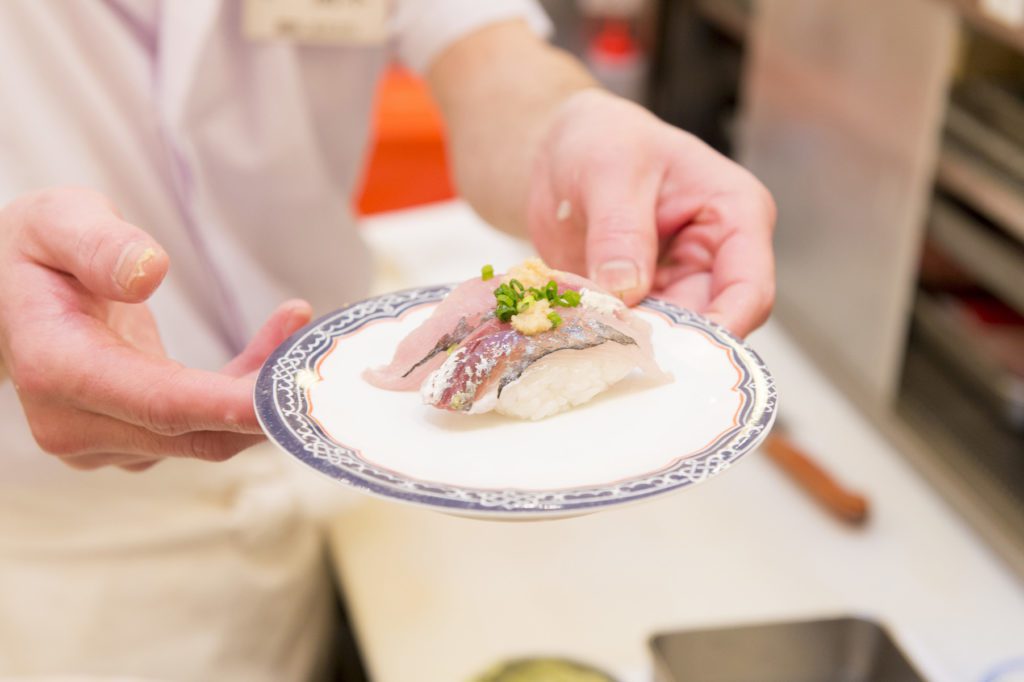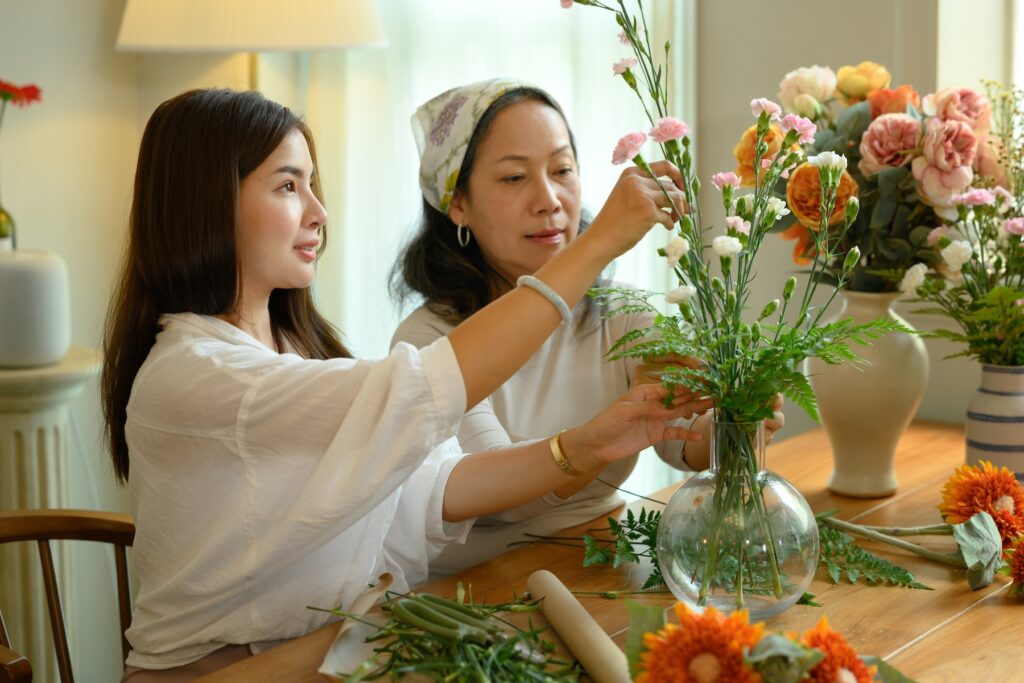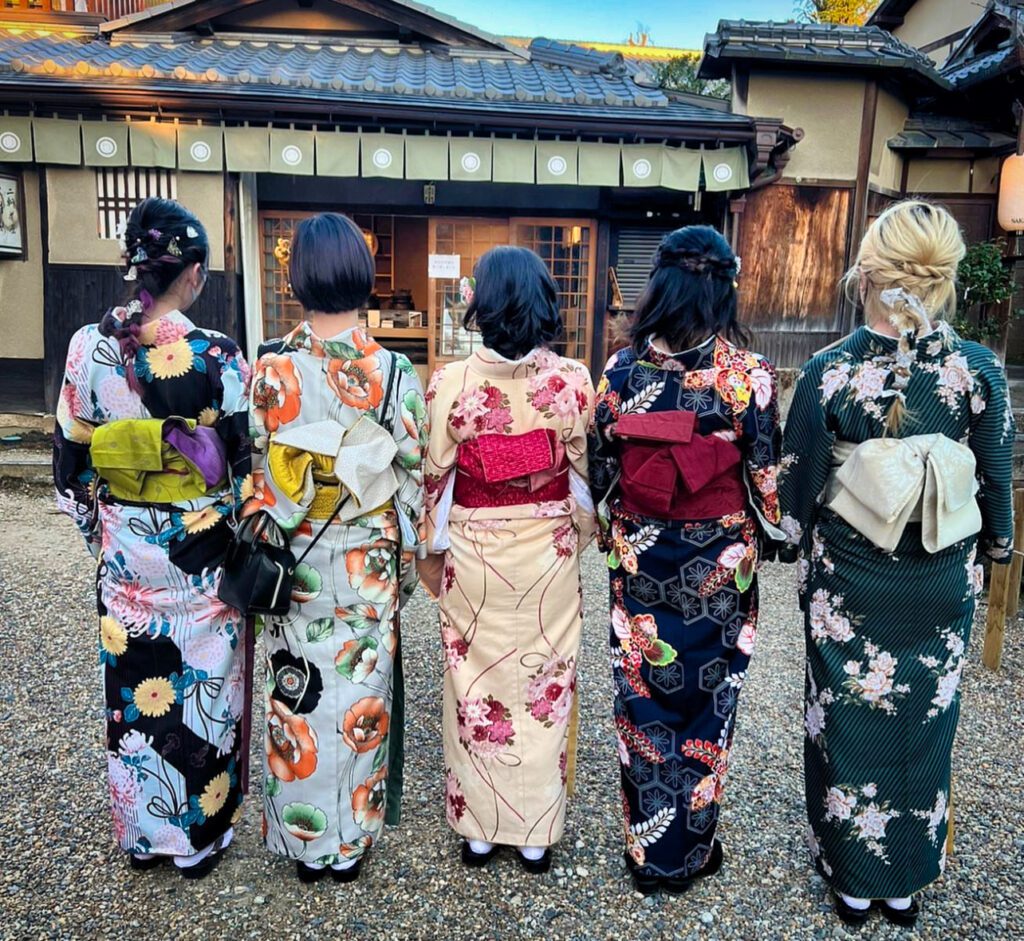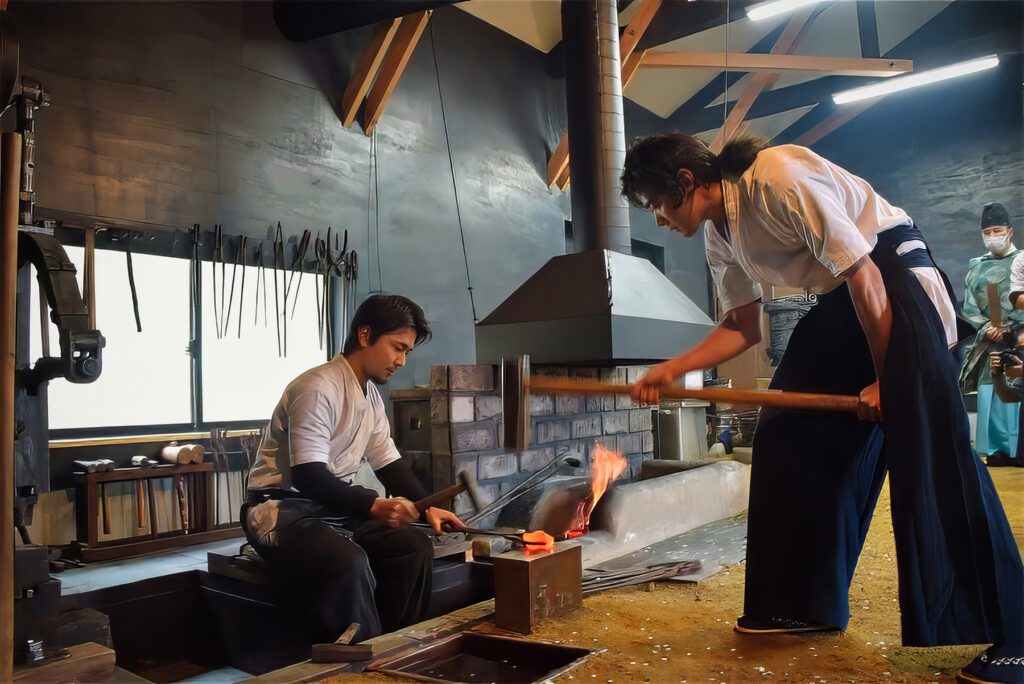Top 10 Skills to Learn in Japan
Cooking Class – Teishoku Home Cooking (or Sushi)
Begin early at Kyoto market to source the freshest ingredients, then discover how to make Japanese food authentically for an elevated palate. Learn essential processes and integral dishes for a tasty and satisfying Japanese meal. Learn about the secret of good dashi (soup stock) for miso soup, and the technique to create dashi maki omelettes, along with the staple sides of ohitashi (vegetables steeped in dashi), pickles, and perfect fluffy white rice with fresh fish grilled, steamed, or marinated.
Featured Tours: Optional on all Kyoto and Tokyo visits

Ikebana Workshop
Ikebana traditions and principles can show you how to display flowers in a new way. Along with ideal techniques, individuality is encouraged. Make your own flower arrangement and change the way you think about floral displays. With origins budding from the 16th century, Ikebana is meant to express life’s perpetual change and renewal in a natural landscape. Using Rikka, Shoka, and freestyles as you consider the essence of the flowers and present them simply and beautifully. Use your inventiveness with the materials provided to convey or effect a mood, dramatic or subdued, the possibilities are endless.
Featured Tours: Optional on all Kyoto visits

Kimono Dress Up
Learn the elegant tradition of the Kimono, a T-shaped garment created by one bolt of fabric. The ornate designs are beautiful yet the real skill is in the way it is fitted, folded, and trimmed with distinction. Colours and charms come in and out of fashion, but the tradition remains. Belts, cords, and delicate sashes are tucked and tied to enhance colour combinations appearing in the intricate embroidered designs, contrasting light and dark and reflecting hair ornaments and accessories.
Featured Tours: Optional on all Kyoto visits

Authentic Tea Ceremony
A thousand years of history connect Zen and Sado to produce the “Way of Tea”. A ceremony conducted in a traditional tearoom with a tatami floor by masters dressed in modest Kimono. Escape the burdens of life by as guest, who moves with purpose and precision, carefully selecting specifically placed items; whisk (chasen), container (natsume), scoop (chashaku) to prepare the tea. Look out for a nod when it is the right moment to consume Wagashi sweet treats, before washing them down with sips of strong Matcha.
Featured Tours: Japan Discovered, Traditional and Tropical, Gardens and Galleries

Kintsugi
Kintsugi, a traditional Japanese art form, is a captivating practice that transforms broken pottery into stunning works of art. The term itself, meaning “golden joinery,” reflects the technique of repairing shattered ceramics by filling the cracks with lacquer mixed with powdered gold, silver, or platinum. Rather than concealing the fractures, Kintsugi embraces imperfections, celebrating the history and resilience of the object. While the full process takes months to complete, you can experience the final and most vital step in repairing your very own ware in a small private 2-hour long workshop.
Featured Tours: Optional on all Kyoto visits

Calligraphy at Koyasan
Shodo, the way of the pen, is mindfulness in black ink and white paper. Through calligraphy, the ink and brush strokes create a focus on the direction, flow, and how it appears on paper. Move your way through the complexity of this spiritual activity for some insight into how words become images and a representation of our energy and control. Having learned the concepts try to identify the styles and Kanji characters that appear in your surroundings, temple scrolls, restaurant menus, street signs and book covers. Calligraphy makes writing more than a written word, but an expression of emotion.
Featured Tours: Hidden Treasures

Indigo Dyeing Workshop
Aizome, or indigo dyeing, is a traditional craft to dye cloth with leaves from the Japanese indigo plant trade, one of the oldest plant dyes which arrived in Japan 1400 years ago. This technique is admired and adapted by many with an interest in textiles and making cloth unique and distinctive. Indigo dye is used extensively for batik and shibori. Samurai wore indigo to prevent wound infections. It is also insect-repelling; odour-preventing and has an antibacterial agent. Take home a self-designed hand-dyed handkerchief as a memento.
Featured Tours: Hidden Treasures

Make Washi Paper
Experts take mush and magically make it transform into paper. From the pulp of Kozo mulberry trees, a transparent liquid solidifies in layers to reveal a template for design. Strengthened from the tree fibres the paper is more durable and substantial. Winter is traditionally a time to make washi with frozen water free from impurities. Add fallen leaves or seasonal flowers to enliven the plain sheet of Washi. As it dries it becomes a real piece of thick paper, ready to be stamped and painted with words of wisdom, then displayed on walls in lands near and far.
Featured Tours: Japan Discovered, Traditional and Tropical, Shikoku Secrets

Make Soba Noodles and Enjoy Them for Lunch
Develop Japanese culinary skills, try to make your own healthy buckwheat noodles, then sample them for lunch with a delicious dipping sauce. Soba is a cherished snack for Zen Buddhist monks, to eat before meditating. Typically, Soba is served warm, in Dashi broth, or cold, with a dipping sauce. Eating a bowl of soba on New Year’s Eve is said to bring good luck, so get slurping, it is a compliment to the chef!
Featured Tours: Japan Discovered, Traditional and Tropical

Japanese Sword-Making
In Kyoto by the Sea, a rare collaboration of three skilled swordsmiths is reshaping the art of traditional Japanese sword making. This venture marks a departure from the solitary nature of swordsmiths, aiming to demystify and make the intricate forging process accessible. Their forge offers unique experiences for visitors, including observing their work, the opportunity to try hammering, and touring the forge with informative displays. The highlight is their gallery, where visitors can handle some of the swords they’ve crafted. This trio passionately shares the history and storytelling embedded in each piece, making the legacy of Japanese swords captivating and accessible to all.
Featured Tours: Wonders of the West, Optional on all Kyoto visits








